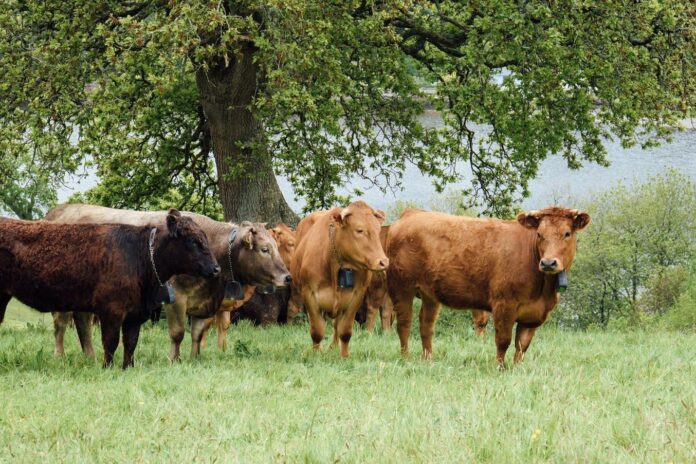The journey to net-zero is ongoing and one such technology that is supporting farmers in the process is Nofence.
The “world’s first” virtual fencing system for grazing livestock is the brainchild of a Norwegian goat farmer with mountainous land.
In 2011, his vision was to graze livestock without the restriction of physical fences and the impact that has on other wildlife.
He developed Nofence using cellular communication and GPS and tested it across Norway.
The technology became commercially available to farmers two years ago, following grazing trials on various beef farms across the UK.
So how does it work?
Livestock wear collars, which communicate with an app farmers have on their mobile phones.
The collars communicate with both GPS satellites and over the 2G mobile phone network.
Utilising GPS, farmers can create virtual pastures on the Nofence app.
Once livestock are turned out on the set virtual pasture, while wearing a Nofence collar, GPS and a mobile data network track the animal’s location and report back to the app.
This triggers the collar to cue an audio signal as the animal nears the virtual fence boundary. If the animal continues to move forward, they will receive an electric pulse.
This sequence of audio warnings, followed by a possible pulse, can happen three times.
If the animal breaches the virtual boundary following the third audio cue, farmers receive a pop-up notification via the Nofence app with the animal’s location as classed as escaped.
Furthermore, animals can return to pasture without receiving any audio warnings or pulses.
Livestock that are trained on the technology utilise their sense of hearing, rather than sight, to remain within a virtually ‘fenced’ area without physical fencing.
What are the benefits?
According to the company, Nofence can bring benefits to any farmer wanting to improve their grazing management.
These include:
- Implementing a rotational grazing system;
- Opening up areas of upland grazing that have previously been inaccessible due to fencing difficulties;
- Those wanting to utilise grazing livestock for environmental land management or rewilding projects.
According to the company, Nofence is suitable for working in intensive rotational grazing, upland, and conservation platforms.
Farmers, who have used the technology, claim that it has allowed for grazing where it may not have been possible before. These areas include upland grazing and conservation grazing.
It aims to:
- Reduce capital costs in fencing infrastructure;
- Free up new grazing opportunities;
- Improve soil health and plant root system;
- Sequestering more carbon.
Success
Rachel Fuller, UK business development manager at Nofence said:
“We hope Nofence will get farmers thinking about their grazing management and if they can start rotational grazing.”
“If they are already rotationally grazing, then we can offer a solution to going out and moving fences every day,” she said.
Synne Foss Budal, general manager for Nofence UK added:
“Data collected from more than 35,000 head of livestock with more than 149 million grazing hours, our farm trials and customer feedback has proven the technology to be highly effective.”
“A typical farm will only have one pulse per every 30 audio cues and escapes are rare,” Budal concluded.
More farming news:





